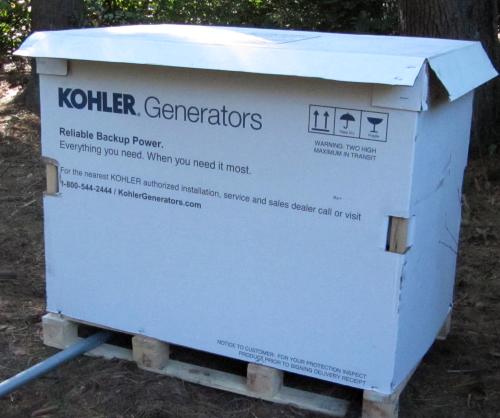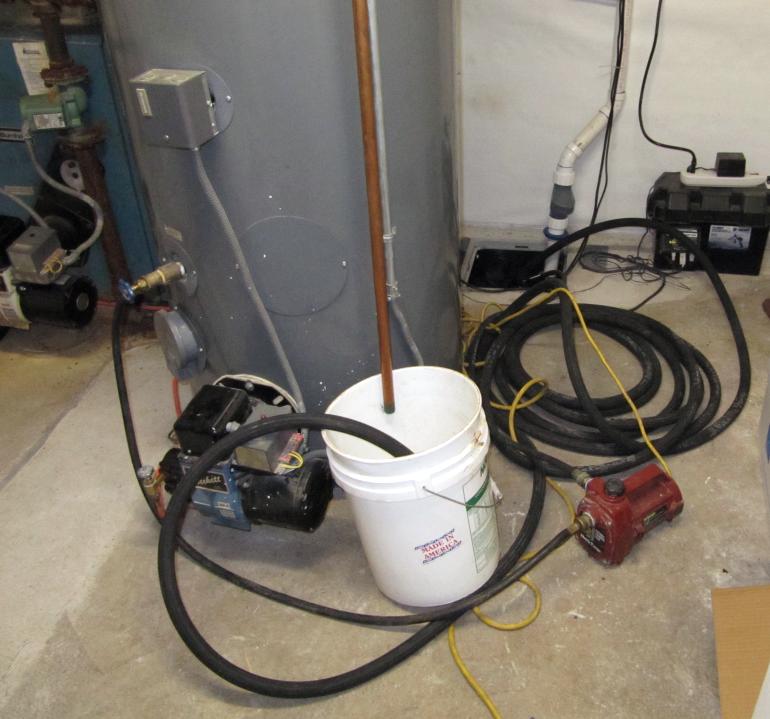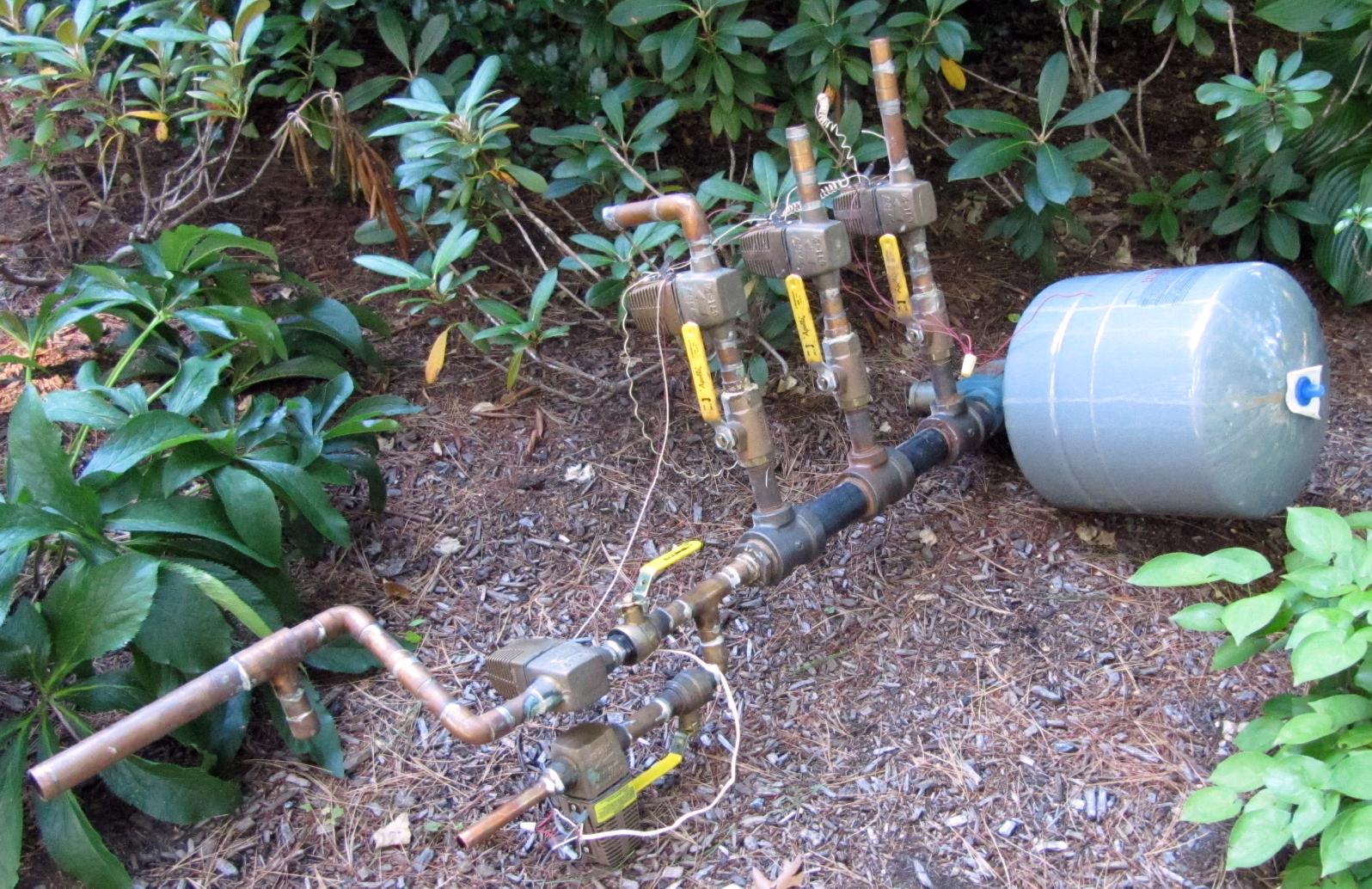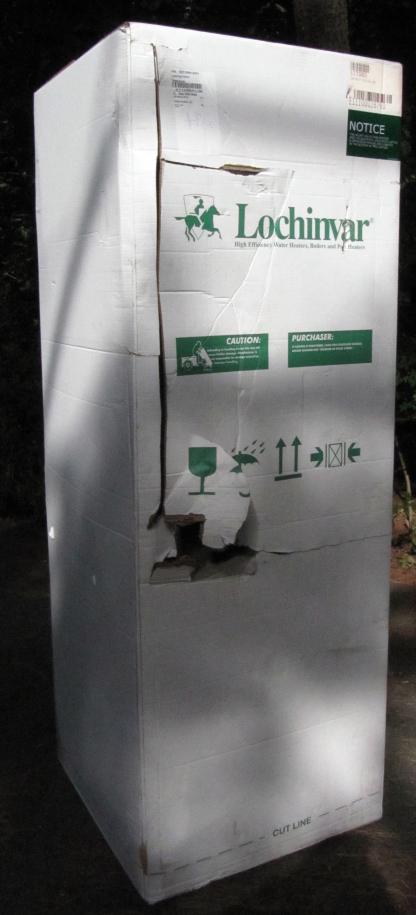 We had a lot of "Demo Days" in my career as a high-tech product developer. They were days scheduled to demonstrate a new product, hardware or software. Thus when we embarked years ago on an addition to our house, I was surprised to hear our contractor say that "demo" was scheduled for the following Monday. I asked him what he intended to demonstrate. That's when I discovered that to a building contractor, "demo" is not short for demonstration, it's short for demolition. In last week's entry Gas (bis), I preserved images of our old heating system for posterity. To install a new gas-fired furnace and water heater, step 1 was to demo - that is, to demolish and remove - the old heating system. Here's how it went.
The operation is shown to the left, with a small pump removing the oil from the tank. The oil was pumped out through a hose snaked in through an air intake used in the old system to provide "makeup air" - that is, outside air - to the furnace. You can click on all the pictures in this entry to enlarge them, and then return with your browser's "Back" button.
I had turned off the water heater the night before, and in the morning we ran a bath to use the remaining hot water, so the water in the heater was only lukewarm. I had figured that the workers might use the sump to drain the water in the heater, and I didn't want the sump pump to have to handle hot water. Water was also drained from the furnace in a similar way. Actually, I'm not sure why a pump was necessary, as the water from the heater would have drained just by gravity - all that was needed was a hose. Perhaps the pump was used just to speed up the process.
Once cut out (all five of them together), here they are (right) lying forlorn in a vacant spot in the shrubbery. They rested there only briefly before being discarded in the truck used to cart off the pieces of the old system. All those pieces were carried up the basement stairs and straight out the door at the top of the stairs: the old furnace, the old water heater (once drained), and all the other miscellaneous items, like the pipes and valves shown above.
The door to the outside had to be taken off its hinges to make the opening wide enough for the tank, and even then there was only a centimeter or so clearance on each side. That door was the narrowest of the three doors in the path of the tank. The image below shows the pieces of the old system being loaded on the truck for disposal. You can see the old water heater already on the truck. The furnace is riding up the lift, and the oil tank is awaiting its turn:  Of course, everything has to be disposed of properly. The tank will become scrap steel, but no doubt only after the sludge that must lie at its bottom after probably sixty years of use has been disposed of as toxic waste.
Below: the Kohler backup generator awaiting the installers. It runs on natural gas. The box is about 1.2 meters wide, 80 cm deep, and 1 meter high (47 X 32 X 39 inches):  My next entry Gas (ter) will show the replacement heat and hot water system (not including the backup generator, a separate item to be done a bit later). Starting on Demo Day eight days ago, our house has been without heat and hot water. The last step in construction of the new system was installation of the exhaust through the chimney (requiring a stainless-steel chimney liner), done last Monday, at which point the system was ready to go. After an inspection by the Town, I called National Grid, the gas company, to have them put in the meter and enable the service. The earliest appointment they could give me was today, three full days after the system was completed and ready to go. However, when I telephoned them at around 2:00 PM to see if they could give me an arrival time, I found out that they had us down to get the meter on Thursday, October 10, not today, October 3. At that point they were fully booked for Friday, so the earliest they could get me in, after I complained bitterly, was Monday, October 7. Thus, we're still in the cold, and without hot water. In next week's blog entry, to be called Gas (ter) (it will describe the new system), you'll find out if they ever showed up. As wondrous as the new system is, it won't work without gas. Apparently, you have to really want to do a gas conversion in order to work with National Grid. Fortunately, the weather this Fall has been unusually warm, so the chill in the house hasn't gotten too bad (so far). We've been heating rooms as needed with electric space heaters, and microwaving water for dishwashing. And who needs to shower?
  |





